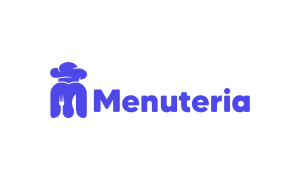10 Must-Have Features in Modern Restaurant Management Software
Margins are tight, guests are demanding, and operations span on-premise, online ordering, and delivery. Here’s what your software must do in 2025 to keep you fast, profitable, and guest-obsessed.
1) All-in-One, Integrated Operations
Front-of-house, back-of-house, and online channels should live in one system. Switching tools slows teams and fragments data.
- Single dashboard for POS, inventory, reservations, delivery, and reporting
- APIs or app marketplace to connect niche tools
- Multi-location support from day one
2) Real-Time Reporting & Analytics
You can’t fix what you can’t see. Real-time sales, product mix, labour percentage, and waste tracking help you act fast—cut slow sellers, staff smartly, and price with confidence.
- Menu mix, hourly sales, and COGS vs. revenue
- Waste, voids, and comps monitoring
- Role-based dashboards for owners, managers, and staff
3) Inventory Control & Food Cost
Food cost leakage and spoilage can wreck margins. Your RMS should auto-decrement stock on sales, map recipes to ingredients, and warn you before you run out.
- Recipe costing with live ingredient prices
- Par levels & smart re-order alerts
- Waste logging and variance reports
4) Flexible POS & Payments
Modern POS should be fast, intuitive, and resilient—tableside, counter, kiosk, and handheld. Support offline mode, easy menu buttons, split bills, tips, and contactless wallets.
5) Online Ordering & Delivery Integration
Orders from your website, app, phone, and third-party marketplaces should funnel into a single queue. That reduces errors and keeps menus/pricing consistent everywhere.
- Centralized order screen and fire times
- Unified menu management across channels
- Commission tracking and delivery status
6) Reservations, Waitlist & Floor Management
Seat more covers with less chaos. Visual floor plans, pacing controls, auto-confirmations, and waitlist texting keep turns smooth and guests informed.
7) Staff Scheduling, Time & Labour
Labour is a top cost driver. Forecast shifts from historical demand, manage time-clocks, and monitor labour % live so you can adjust mid-service if needed.
- Demand-based forecasting and shift templates
- Clock-in/out with break compliance
- Payroll export or native payroll integrations
8) CRM, Loyalty & Marketing
Winning repeat visits beats constant acquisition. Build profiles, track preferences, segment offers, and reward loyalty across dine-in and digital channels.
- Unified guest profiles with consented data
- Points, tiers, and targeted promos
- Automations: birthday offers, win-back emails/SMS
9) Menu Management & Pricing Flexibility
Menus change constantly. Update items, modifiers, and prices once and sync everywhere. Support limited-time offers, “86” items in real time, and channel-specific pricing.
10) Cloud-Based, Secure & Scalable
Access dashboards from anywhere, roll out updates automatically, and protect payments and PII with strong security. As you add locations, keep data centralized and permissions tight.
- Encrypted data + PCI-compliant payments
- Automatic backups and audit logs
- Granular permissions for managers vs. crew
“The right RMS doesn’t just take orders—it gives you the visibility to run a tighter, more profitable operation while guests feel the difference.”
Quick Evaluation Checklist
| Question | Why it matters |
|---|---|
| Does it unify POS, inventory, online ordering? | Reduces errors and subscription sprawl. |
| Is the UI easy for new staff? | Fewer mistakes during rush. |
| Are analytics real-time? | Make same-day adjustments. |
Bottom Line
Pick software that helps you move faster and decide smarter: integrated operations, clear analytics, airtight inventory and labour, seamless online ordering, and tools that build loyalty. That’s how restaurants thrive in 2025—on-premise and online.
